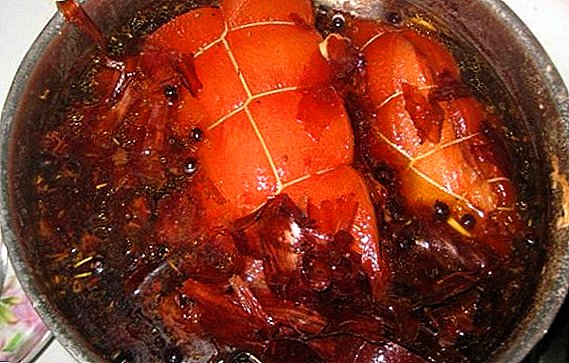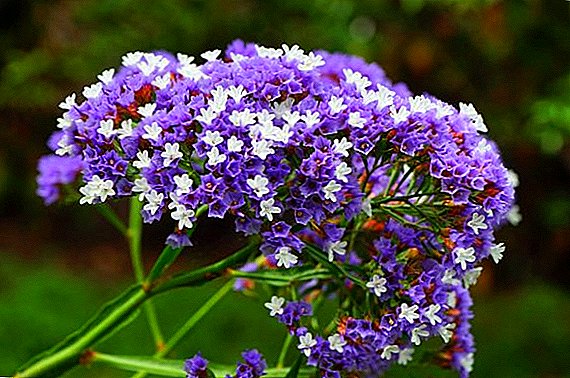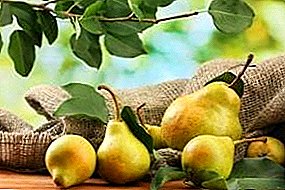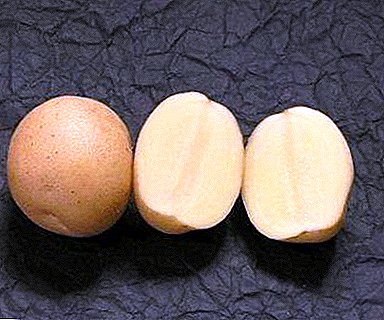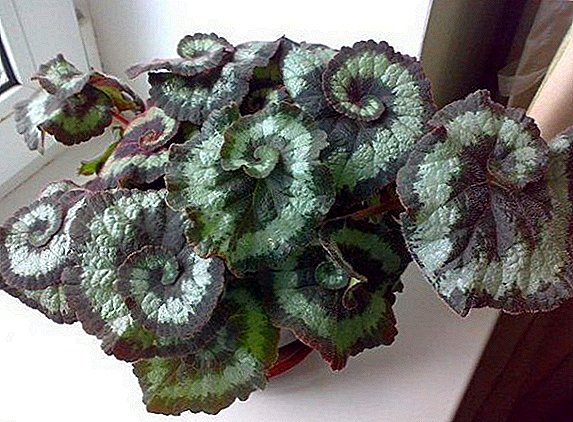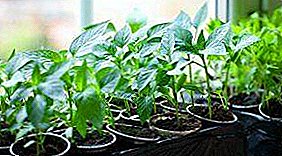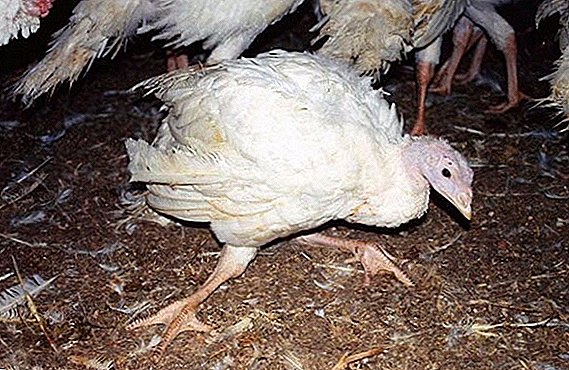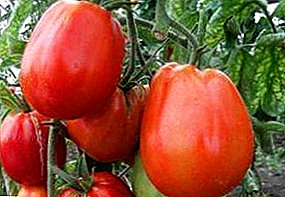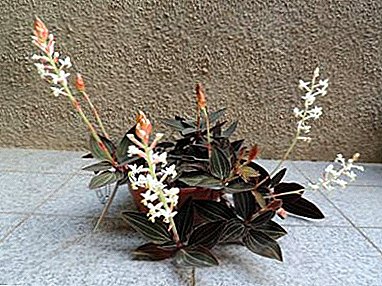
Ludysia is an interesting plant that represents the genus Orchids. Differs in small flowers, which resemble pearls in appearance. Large leaves contain fancy silvery patterns resembling labyrinths.
The culture of care is demanding, but there is nothing new in it. It is necessary to monitor the watering, choose the right place and conduct preventive treatments from harmful insects, as well as diseases.
What is this plant?
Ludysia Orchid is an ornamental plant, which is called hemariah.. Orchid grows on the ground or the walls of caves covered with moss.
Appearance
 The flower has a short rhizome, but it is well branched. It copes with obtaining nutrients and fixing the plant on a horizontal or vertical surface.
The flower has a short rhizome, but it is well branched. It copes with obtaining nutrients and fixing the plant on a horizontal or vertical surface.
Ludysia Orchid is equipped with a winding and powerful stem with rosettes of sessile leaves.. The height of the plant reaches up to 15 cm. On the other hand, the flower is actively releasing the lateral processes, due to which it spreads markedly in width.
The leaves are alternately arranged, they are oval or ovoid, and their tips are pointed. About 5 leaves are formed from one outlet. The length of the sheet plate is 7 cm, and the width is 4 cm. There is a beautiful pattern on the surface of the sheet, and the surface itself is smooth. Color is bright green.
Where does it grow in nature?
Under natural conditions, hemaria grows in the rain forests of East and Central Asia.. Now this plant can be seen in New Zealand, New Guinea and even in Russia.
What is the peculiarity of hemaria?
Ludysia compares favorably with other types of orchids by the presence of a pearl thread and leaves covered with silver patterns. It is for the fancy pattern on the leaves that hemaria are referred to as precious orchids.
Description of varieties with photos
Ludisia is represented in a wide variety of varieties and species.. Talk about them below.
Discolor

This plant is distinguished by a winding creeping stem. Radical rosette includes leaves of dark green color, which are covered with silver longitudinal veins. An orchid grows 3-6 leaves at a time. Peduncle erect, its length is 10-120 cm, covered with numerous small white flowers.
We recommend to watch the video about the features of Ludizia Discolor:
Dawson

Plant height reaches 30 cm. The leaves are large, decorated with thin stripes of pink color. The surface of the sheet plate is velvety, fascinating with its richness of colors.
Odin

In this orchid, the longitudinal silvery veins on the leaves create an unusual pattern.. Pair transverse strokes that run along the entire length of the central strip.
Alba

This flower has a lighter color of the foliage, and stripes of white are on the surface of the leaf.
Otletae

The foliage is dark green and there are orange or red stripes on its surface.
Tanlaniana

This orchid species has a wide leaf plate.. Between the longitudinal veins there is a bright patterned mesh.
Velveteen

The leaves are saturated green color, the surface is velvety. The upper part of the sheet is decorated with long red stripes.
Bloom
When does it happen?
Ludysia blooms in late autumn - early winter. It is at the time when all the other indoor plants are sent to winter rest, the orchid is just beginning to bestow with the unusual beauty of its flowering. This period lasts for a month.
Caring for hemaria at this time
Before flowering, the plant should be fed with mineral compounds, monitor the soil moisture so that water does not penetrate into the peduncles. It is also necessary to control that the soil was wet, but not overmoistened.
Board: After flowering, it is imperative to remove all faded buds, reduce watering, as it is time for the plant to rest.
How to stimulate the process?
To stimulate the flowering of ludizia, you need to monitor the temperature of the air.it should not exceed 29 degrees and not lower than 20 degrees. At night, compared with the daytime temperature should be 3-5 degrees less.
Thanks to these drops, the plant will start planting flower buds. When the orchid blooms, it needs to be cool to the temperature of the air was 18 degrees.
Basic home care guidelines
 Choosing a place. Ludysia prefers to grow in the shade, but is able to withstand the morning or evening rays of the sun. Even if you put it on the northern windowsills, it will grow well and develop if you provide additional coverage.
Choosing a place. Ludysia prefers to grow in the shade, but is able to withstand the morning or evening rays of the sun. Even if you put it on the northern windowsills, it will grow well and develop if you provide additional coverage.- Temperature. Temperature should be moderately warm. For Ludizia, the daytime temperature of 20-23 degrees remains optimal, and the nighttime temperature - 17-19 degrees.
- Humidity. Ludysia grows and develops only in a well-humid room. To increase the level of humidity, you can use the following methods:
- set a flower near a fountain or aquarium;
- from time to time to put the pot in a pan with wet vermiculite and pebbles;
- apply a humidifier.
Important: Spraying ludysia is not recommended, as stains may remain on the surface of the leaves due to water.
- Lighting. The orchid feels great in artificial light, but the duration of the daylight should not exceed 12-14 hours. Otherwise, the stems will be thin.
- Watering. Flower moistening should be regular throughout the year. The soil should be wet, but no stagnant water. Excess liquid to be drained from the pan half an hour after watering.
- Top dressing. As fertilizing ludizii use complex fertilizers for orchids. Particularly in need of additional nutrition the plant during the period of active growth and flowering. The frequency of feeding and preparation of the solution of the desired concentration is indicated on the packaging of the fertilizer used. Most often this happens with every 3rd irrigation. It is not recommended to feed the plant all year round. After flowering, ludysia enters a period of rest, so you need to give orchids rest.
We recommend watching the video about caring for ludizia:
Transfer
Adult plants should be planted in small transparent containers with large drainage holes.. At the bottom is sure to put a brick crumb or vermiculite.
As for the soil, but you can do it yourself if you take the following components:
 crushed pine bark - 4 parts;
crushed pine bark - 4 parts;- Sphagnum moss pieces - 4 parts;
- charcoal, peat and leaf earth - 1 part.
You can use the purchased soil mixture intended for orchids.
Hemaria transplantation should be carried out in the spring, do it every 2-3 years.. Follow a specific procedure.
- Before transplanting, pour flower over the day with warm water.
- Carefully remove the roots along with a lump of earth and the method of transferring transplants to another pot. Kidney digging is not necessary.
- For 3-4 days, place the plant in a room with diffused light.
We recommend to watch a video about transplant ludizii:
How to multiply?
Ludysia breeds in several ways: by dividing the bush and grafting. The simplest is the first option, since you just need to divide the adult plant into parts, each of which should contain 2-3 processes. Cutting requires more time, but the survival rate of seedlings is better in spring and summer.
The procedure is as follows:
- Cut off the upper part of the stem so that it has 2-3 knots and aerial roots.
- Sprinkle the place cut with crushed activated charcoal or cinnamon.
- Cover the cuttings should be in wet moss, placing the seedling leaves on its surface.
- Press the cutting horizontally into the wet sphagnum, not too deep.
- As soon as small roots are formed, the plant is planted in a pot.
Diseases and pests
Ludisia can only get sick as a result of improper care.. If you regularly re-moisten the soil, it will lead to the development of rot, and bright lighting will lead to plant burns.
Also the danger for the flower are the following some insect-parasites.
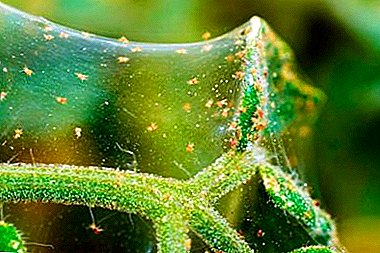 Spider mite. This insect sucks the juice from the orchid. Due to the small size it is impossible to detect the pest. It can only be recognized because of the thin web that covers the leaves or the stem.
Spider mite. This insect sucks the juice from the orchid. Due to the small size it is impossible to detect the pest. It can only be recognized because of the thin web that covers the leaves or the stem.- Shchitovka. It is a sucking parasite that secretes a sticky secret on a leaf plate of ludisia. Recognize the insect can be on brown shells, which are glued to the leaves.
- Mealybug. This pest on the plant is visible in the form of white clumps, similar to cotton.
You can save the orchid, if you follow these tips:
- Outline the symptoms and correctly determine the cause of the pathology.
- Separate the affected plant in quarantine.
- To carry out treatment using an integrated approach. For this you need to use not only chemical treatments, but adjust the conditions of detention.
Similar flowers
The following types of plants are similar to Ludia
- Parfipedilum. This plant is actively grown in houses and apartments, as it is easy to clean. With ludysia they resemble the shape and color of flowers.
- Anecochilus. This plant is similar to Ludize silver pattern, which flaunts on the leaves. The flower needs moderate temperature conditions and a cool content.
- Heirostylis. This genus of orchids has 54 species. With ludysia they resemble the unusual silver-gray color of the leaves.
- Florium. This plant looks like not only patterned leaves, but also white flowers.
- Dossinia marble. This is a species of the Dossinia genus, an orchid family. They also have oval leaves, on the surface of which silvery patterns are scattered.
Conclusion
Ludysia is a type of orchid that is distinguished by small pearl flowers and patterned leaves. Care for the flower should be carefully and regularly, as this will prolong the flowering period and prevent the development of disease.


 Choosing a place. Ludysia prefers to grow in the shade, but is able to withstand the morning or evening rays of the sun. Even if you put it on the northern windowsills, it will grow well and develop if you provide additional coverage.
Choosing a place. Ludysia prefers to grow in the shade, but is able to withstand the morning or evening rays of the sun. Even if you put it on the northern windowsills, it will grow well and develop if you provide additional coverage. crushed pine bark - 4 parts;
crushed pine bark - 4 parts; Spider mite. This insect sucks the juice from the orchid. Due to the small size it is impossible to detect the pest. It can only be recognized because of the thin web that covers the leaves or the stem.
Spider mite. This insect sucks the juice from the orchid. Due to the small size it is impossible to detect the pest. It can only be recognized because of the thin web that covers the leaves or the stem.
